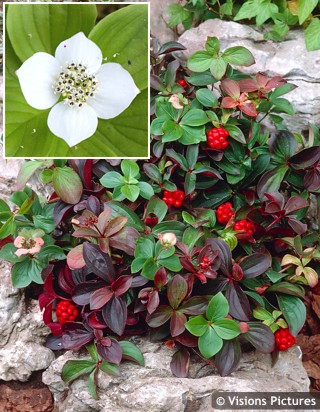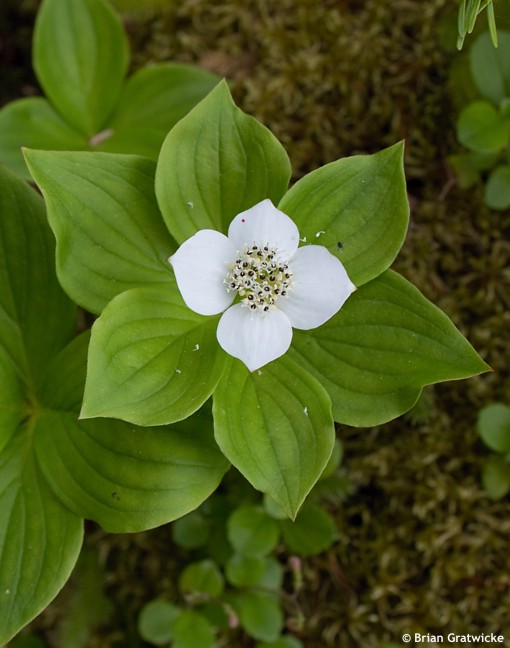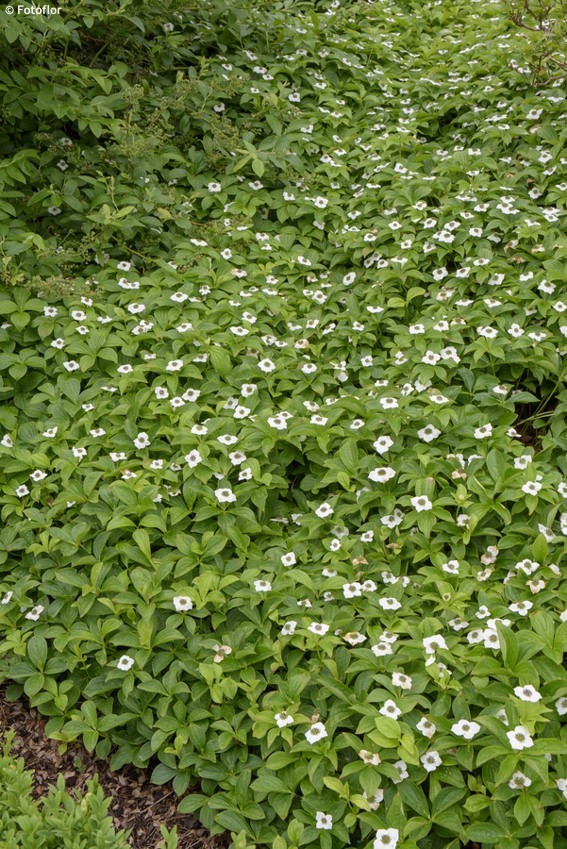Cornus canadensis creeping dogwood, dwarf cornel


Being a dogwood, its true flowers are inconspicuous, tiny and composed in small, spherical heads. But the bracts surrounding it are the showy things. They are white and their size largely varies among individual seedlings, but plants commonly sold in garden centres are selected for larger flowers/bracts that can measure up to 4 cm across. They are followed by clusters of rich red, glossy berries in autumn. They are edible but lack a significant flavour (source: www.pfaf.org).
The leaves are similar to those on Japanese dogwood – ovate to obovate with a few prominent veins running across. They are fresh green in spring, mid to dark green in summer, and turning carmine red and burgundy purple in autumn. If the winter is mild they persist on the plant until spring when they should be removed, anyway, in order to let the new ones push through.
Creeping dogwood prefers evenly moist but well-drained, acid soil. Especially in its first year after transplanting make sure it does not dry on. Grow it in partial shade or deep shade as it does not need full sun to flower. It is extremely hardy to min. -45°C (USDA zone 2).
Last update 19-02-2013
Goods are shipped all over Europe. For Russia and U.K. and for further details please read about SHIPPING OPTIONS HERE.
Are you interested in a serious discount for orders NOV-FEB? Check your options here.
THE PRICES INCLUDE VAT of 15%. For quick conversion you can use 1 CZK = approx. 0.04 EUR
- STANDARD QUALITY - Plants of this group are 1st class quality with number of branches and overall density adequate to their size and age, considering they were container grown.
- DE LUXE QUALITY - This label guarantees a luxurious quality of manually selected plants that, compared to their height and age, are exceptionally dense and beautiful.
- EXTRA - These plants are usually mature and bigger specimens with exceptional overall appearance.
- STANDARD (as described in the plant form) means a tree with a trunk of 190-210 cm and a crown at the top, unless specified differently. The commercial size for trees is their girth measured in the height of 1m from ground.
- HOBBY - These plants are of the same quality as our standard-quality plants but younger and therefore cheaper.
- SHRUB - a woody plant with branches growing bushy from the ground level.
- HALF-STANDARD or MINI-STANDARD - a small tree with shorter trunk, its size is usually specified.
- FEATHERED - These are trees with branches growing already from the base of the trunk and up along the stem.
- GRASSES and PERENNIALS - Sizes given usually read the diameter of the pot or the clump, as specified.
















